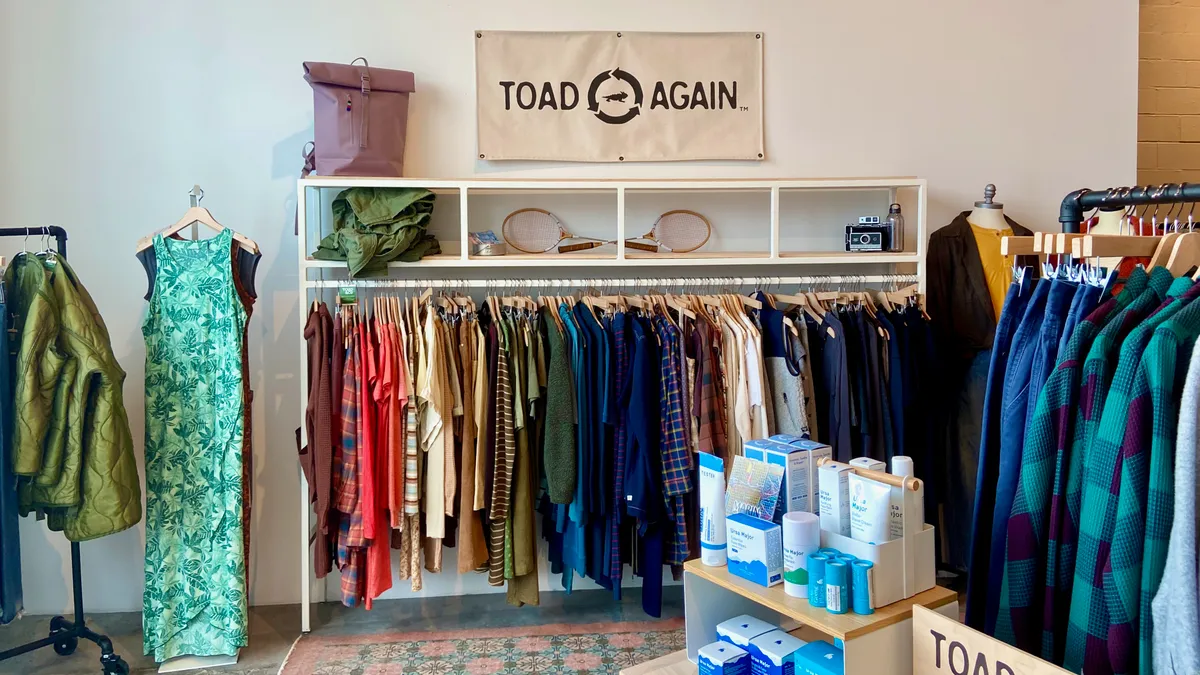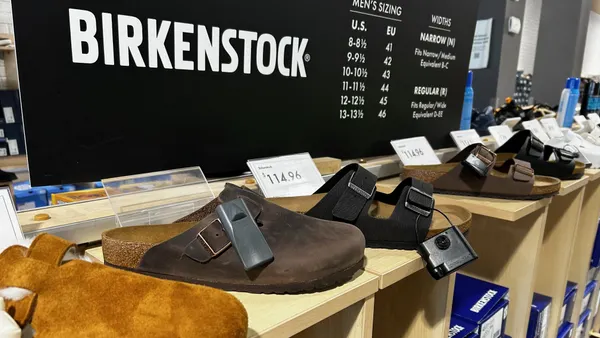With vivid new designs aimed at enticing a new generation worldwide, American jeweler Tiffany has effectively reclaimed its iconic status. Thanks to recent releases like Paper Flowers and Tiffany Hardware, and with greater transparency around the source of Tiffany diamonds, many younger consumers are returning to their grandparents' favorite blue box for engagement rings and other occasions.
"[Tiffany] has been working towards attracting millennials and creating the right brand message for today's consumer. The brand has successfully turned around the image in recent quarters," noted Jane Hali & Associates analysts in comments emailed to Retail Dive. "As we shop the brand's flagship and online assortments, the home and gifting categories are strong. Although some of these assortments are placed in smaller format stores, we think these categories should have a stronger presence. With more gift and home in branch stores, there would be more dwell time and the creation of a fun, less intimidating atmosphere. … One of the company's strongest collection[s] is the Tiffany Hardware, which resonates with a younger consumer. The collection is more fashion forward."
Tiffany's sparkle has dulled of late, however, which executives attributed to macro headwinds, notably volatility in the stock market that rattled its wealthy clientele. In the fourth quarter, a 1% worldwide net sales decline to $1.3 billion and a 1% comp decline were no surprise in light of the company's holiday report, and the company chalked it all up to "softer demand by local customers and foreign tourists across most regions and product categories, and which management believes was affected, in part, by external events, uncertainties and market volatilities." Also in the quarter, net earnings soared to $205 million from $62 million a year ago, thanks largely to a lower effective income tax rate, which proffered an $8 million benefit.
While several analysts have noted that the strong U.S. dollar has intimidated Chinese tourists, sales in Mainland China remain strong, and CEO Alessandro Bogliolo, speaking to analysts last week, essentially called that a draw, though he did say that tourism-based sales in all geographies were more "volatile."
"That is definitely an area of concern that affects our results," Bogliolo said, according to a Seeking Alpha transcript. "But what we are doing is to keep on working and investing on domestic customers. And we have seen sales to domestic customers across geographies growing nicely, very strongly in China, less so in the U.S. but still positive and growing and we believe that's the best way to build our tourist business strong with domestic customers when they are at home."
Those challenges are leading some analysts to temper their expectations for the jeweler, although others retain long-term confidence in the brand, as they do for a few other luxury players.
"We are excited about disciplined innovation across product, technology, & stores and we also believe e-commerce and China provide substantial long-term growth opportunities," Cowen & Co. analyst Oliver Chen wrote last week in comments emailed to Retail Dive. "In the near term, [Tiffany] will face headwinds from lower tourism, tough compares and [currency] trends; however, we believe [Tiffany] is a solid long-term idea and is the only luxury stock we like alongside LVMH."
There are signs of choppy waters on the horizon, however. The global economy remains robust, but that's slowing both at home and abroad, which will complicate that long view. Tiffany's struggles at home in the U.S. could be further undermined by an enduring instability in the American middle class — in the U.S., middle-income earners have increasingly struggled for years.
Indeed, with the strong dollar less of an issue at home, Americans' own spending in the fourth quarter softened at Tiffany's along with that by foreign travelers. In the Americas, net sales were "approximately unchanged" at $618 million for the fourth quarter and comps were also flat. Net sales in the region for the year rose 5% to $2 billion as comparable sales rose 5%, but the company's flat holiday quarter, rather than helping spike sales further, instead spelled trouble for the company in the region.
"The deterioration is mostly among middle and higher middle-income consumers" in the U.S., noted GlobalData Retail Managing Director Neil Saunders in comments emailed to Retail Dive. "Demand from higher-income demographics is largely unaffected."
Tiffany has put itself in a good position to overcome that, however, Saunders also said. GlobalData Retail's consumer tracking data shows that Tiffany's brand recognition and affinity are both increasing among younger consumers aged 35 and under. "While there is further to go in converting this group to buyers, we believe Tiffany has significant potential to expand its reach, largely thanks to the refresh of its brand image," Saunders said. "It is also worth noting that without this work to draw in a younger crowd, Tiffany's final quarter numbers would have been significantly softer."






















